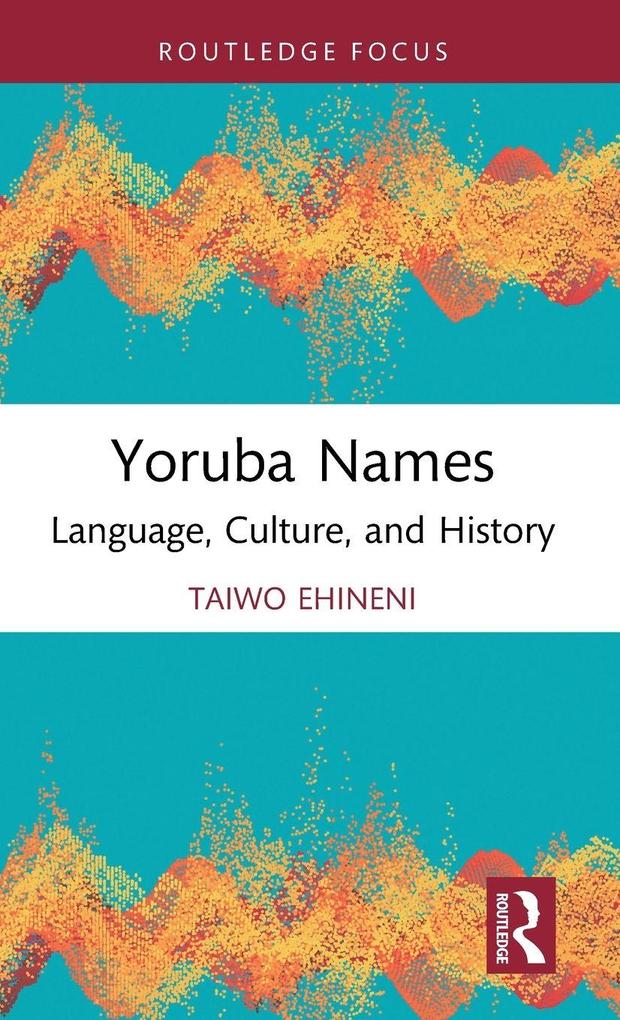This book focuses on the naming tradition among the Yoruba, one of Africa's largest ethnic groups, consisting of over 40 million people.
Inhaltsverzeichnis
Introduction: What's in a Name?
1. The Philosophy of a Name
2. Construct, Context, and Connections: The Semiotics of Yoruba Names
3. Naming as Act and Art: A Synthesis
4. Theorizing Names: Moving Beyond Western-Centric Models
Chapter 1: Yoruba Naming and Meaning
1. Introduction: The Cultural Weight of a Name
2. The Pragmatic Theory of Properhood (TPTP): A Critical Review
3. Meaning in Yoruba Names: Beyond Referentiality
*3. 1 Denotation: Literal Meaning (Revisited)
*3. 2 Connotation: Cultural and Historical Meanings
*3. 3 Perspectivization: The Individual and Negotiated Meaning
*3. 4. Subversion and Re-semanticization: Turning Meaning on its Head
4. Conclusion: Reconsidering the Nature of Meaning in Proper Names
Chapter 2: Personal Names: Constructing Identities and Narrating Social Experiences
1. Introduction: Names as Sites of Identity Construction
2. The Naming Context Among the Yoruba: A Socio-Cultural Ritual
3. Factors Motivating the Choice of Names: A
*3. 1 Family Situation or Parents' Experiences
*3. 2 Birth Circumstances
*3. 3 Birth Order
*3. 4 Sex
*3. 5 Religion
*3. 6 Profession
*3. 7 Death Situation
4. Conclusion: Names as Dynamic Narratives of Self
Chapter 3: Orí kì : Praising Destiny, Constructing Identities in Yoruba Culture
1. Introduction: Orí kì as a Cultural and Linguistic Phenomenon
2. The Concept of Orí : Foundations of Yoruba Identity and Destiny
3. Orí kì as a Verbal Instantiation of Orí : Performance and Power
4. Types of Orí kì : Exploring Specific Forms
* 4. 1 Orí kì À bí s (Attributive Personal Praise Names)
* 4. 2 Orí kì Orí lé (Totemic Praise Names)
* 4. 3 Orí kì À là jé (Praise Nicknames)
5. Conclusion: Reconsidering the Nature of Meaning in Proper Names
Chapter 4: Place Names: Language and History
1. Introduction: Place Names as Embodied Histories and Ecological Markers
2. Yoruba Toponyms: A Tapestry of History, Ecology, and Social Life
* 2. 1 Flora Toponyms
* 2. 2 Hill Toponyms
* 2. 3 Hydro-Toponyms
* 2. 4 Topographic-Color Descriptive Toponyms
* 2. 5 Stone Toponyms and Forest Toponyms
* 2. 6 War-related Toponyms
* 2. 7 Agro-Toponyms
* 2. 8 Place names based on environmental changes
3. Conclusion
Chapter 5: Pet Names: Language, Resistance, and Protest
1. Introduction: Naming as Resistance and Protest
2. The Yorubas and the Pet Culture
3. Pet Naming and Linguistic Creativity in Yoruba Culture: The Art of Subversion
4. Yoruba Pet Names: Sites of Resistance and Social Commentary
* 4. 1 Pet Names and Protest in Family Matters
* 4. 2 Pet Names and Protest in Communal Situations: Navigating Power and Conflict
* 4. 3 Pet Names and Protest in National Politics: Voicing Dissent
5. Conclusion
Chapter 6: Hair Names: Language and Women's Agency
1. Introduction: Hair as a Site of Agency and Cultural Commentary
2. Hairstyling in Yoruba Culture
3. The Poetics of Plaiting: Creativity and Complexity in Yoruba Hairstyles Names
4. Crowning Glory: Hairstyle Names as Women's Agency and Individuality
5. Conclusion
Chapter 7: Building Names: Language and Politics
1. Introduction
2. Architecture as a Reflection of Cultural Identity
3. Renaming of Buildings and Political Ideology
4. Building Names and the Politics of Prestige and Donations
5. Conclusion
Conclusion: Everything Can Be in a Name: Reimagining Onomastics Beyond Referentiality
1. From Question to Affirmation: Reframing the Scope of Onomastics
2. Beyond Referentiality: A Multidimensional Understanding of Naming
3. Naming as a Performativity and Power: Reconsidering Agency
4. Towards a Culturally Sensitive Onomastics: New Orientations and Methodologies
5. Future Directions: Opening New Avenues for Inquiry
Index













